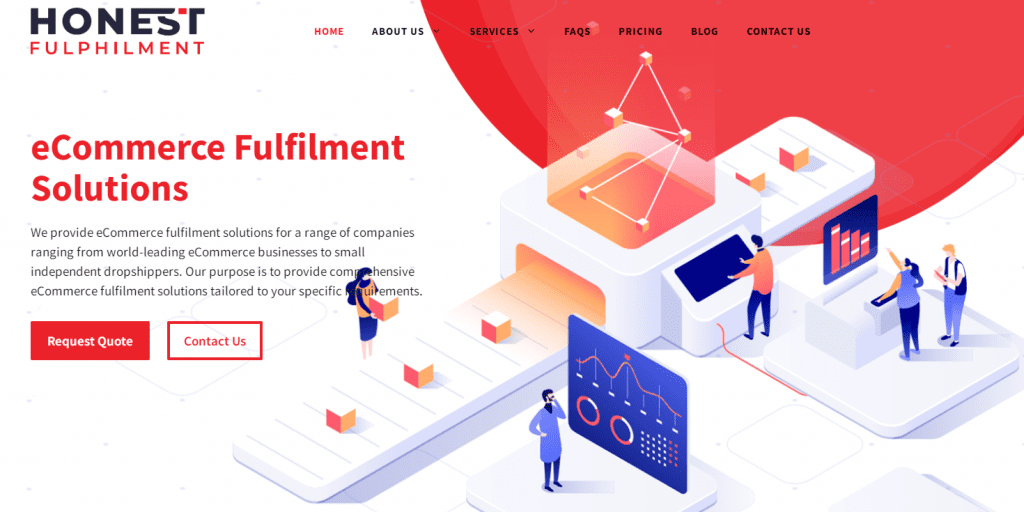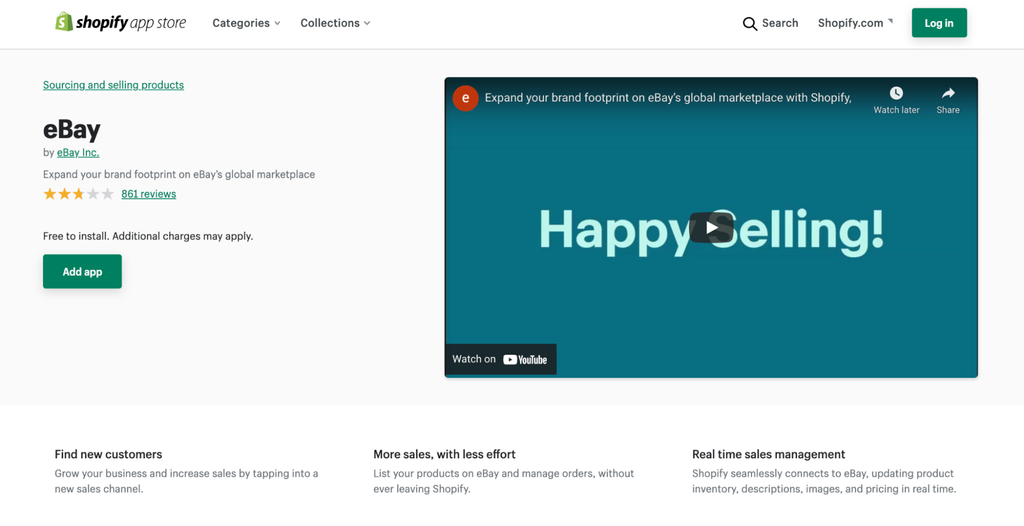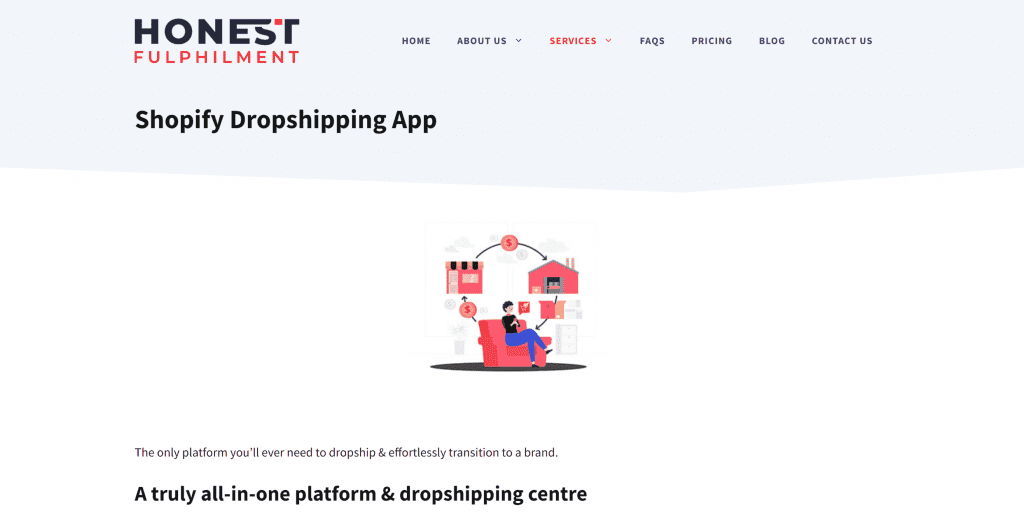What Is Shopify Marketplace?
- 27/10/2022
- Philip K
With the booming of e-commerce business, many business owners pay more attention to online business. An online marketplace is a good option for business owners, especially for business owners who want to start a small business. At present, the are various online marketplaces in global business such as eBay, Amazon, Walmart, Facebook, Shopify, etc.
This passage will mainly talk about the Shopify marketplace today. If you want to sell your products on Shopify, and if you want to make money through Shopify, the passage can help you to a great degree.

What is Shopify and How does it Work?
Shopify is a complete e-commerce platform that can help you start, grow, and manage your business. As one of the biggest online commerce marketplace platforms, Shopify attracts more attention from business owners because it can integrate all of its commerce into a single platform.
The working method of Shopify mainly includes several points:
Through Shopify, business owners can create an online store and sell their products in various places across multiple channels from social media to online marketplaces such as websites, mobile equipment, personal activity, brick-and-mortar store, pop-up shops, shops in the mall, etc.
Shopify is fully cloud-based and hosted, and that means the developers will handle software and server upgrades and maintenance for users, and the business owners can access it from any connected compatible device. It can give business owners the flexibility to access and run their business from anywhere with an internet connection.
In traditional business mode, a commerce business requires a series of tools to manage products, inventory, payments, and shipping, and business owners usually spend a lot of time and money on stitching disparate systems and data together. But in the Shopify marketplace, Shopify can integrate those technologies and ensure business owners can easily access and integrate any other business tools they need to make Shopify work for their business.

Why Create a Shopify Marketplace?
Knowing about the definition of the Shopify marketplace, let’s talk about the advantage of creating a Shopify marketplace. The benefit of creating a Shopify marketplace mainly includes but is not limited into:
How to Build a Marketplace with Shopify?
Before creating a Shopify marketplace, you’d better make research and clearly define your products, your target market, and the types of marketplaces you want to choose, etc. The research and the definition can help you clearly know which is right for your business.
At present, there are several ways to classify online marketplaces. Typically, we categorize marketplaces by different perspectives such as participants, focus, and offerings.
When classifying marketplaces by participants, there existed three types of marketplaces such as B2B, B2C, C2B, C2C, or a combination of them.
- B2B
In the model of business-to-business, both sellers and customers are companies who have their own regular customers. A typical example of a B2B marketplace is Alibaba.
- B2C
B2C also be called drop shipping. In this model, the customers usually are not traders but direct final users of the products. A typical example of a B2C marketplace is Honest FulPhilment.
- C2B
In the model of the customer to the business, the sellers usually not are traders but freelancers. A typical example of a C2B marketplace is Upwork.
- C2C
In the model of customer-to-customer, both sellers and customers are not companies but individuals. At present, the C2C marketplace mainly includes Etsy and eBay.
When classifying marketplaces by focus, there existed two types of marketplaces: horizontal marketplace and vertical marketplace.
- Horizontal Marketplace
Horizontal marketplaces can provide various products for customers, and the customers can source various items such as food, clothes, toys, electronics, etc.
- Vertical Marketplace
Vertical marketplace mainly caters to a specific industry or niche market. In this model, sellers usually provide specific products or services for customers with specific needs.
When classifying marketplaces by offerings, there existed three types of marketplaces such as product marketplace, service marketplace, and project marketplace.
- Product Marketplace
Product marketplaces mainly sell physical products that consumers can touch and feel such as food, clothes, toys, books, etc.
- Service Marketplace
Service marketplaces mainly help consumers find skillful professionals according to their specific requirements.
- Project Marketplace
Project marketplaces mainly help entrepreneurs raise money for startup products through crowdfunding methods.
Knowing the above information you need to know before creating a Shopify marketplace, you can validate your business idea. Before building a marketplace, you must ensure your actual needs for your platform. It’s necessary to validate your business idea before starting. There are several points to help you determine whether building your dream marketplace is worth the cost:
Before starting your marketplace, you’d better research the most prominent players in your field and how big of a sector it is so that you can ensure whether your idea is available.
It is necessary to identify your target audience. In the work, you can know more information about your customers so that you can run your business very well, such as age, interests, location, income, and occupation.
Before starting your marketplace, it is sensible for you to choose an unexplored and promising field, because the growing space of the explored field usually is narrow.
You’d better not copy some experience of others marketplace into your marketplace blindly. It is sensible for you to adopt some new creative ideas after strict research and estimate because it can help you attract more attention from consumers and gain more customers. The method is good for you to build or expand your marketplace.
It is necessary for you to build a draft of your platform so that you can show your idea to your consumers very well. Through your showing with a prototype, your marketplace will be more real for your consumers, and it can help you to build long-term cooperation between you and your customers.
Between validating your business idea and starting your marketplace, it is necessary for you to choose your revenue model. For the Shopify marketplace, there are several revenue models you can choose from.
In the commission model, you can charge sellers, buyers, or both of them a certain percentage of each transaction, once the transaction between the seller and the buyer is created.
In the freemium model, you can provide your users with some basic marketplace functionality for free. If your users need advanced products or services, they need to pay some extra fee for them.
In the membership model, your users need to pay a monthly fee or annual fee to access your marketplace platform.
In the listing fee model, the retailers on your marketplace platform need to pay a specific fee for each product they post on your marketplace. A typical example of this model is Etsy.
In the advertisement model, third-party companies will be allowed to promote their offerings on your marketplace platform, and they need to pay a certain fee for the service. A typical example of this model is Zillow.
To ensure your Shopify store works on the right path, here are some practical tips for you, and you can make a reference if you have selected your products.
It is essential for your Shopify store to select a proper Shopify theme because it will reflect the type and the style of products you’re selling.
You must select a proper color for your Shopify store because it can help you properly convey the feeling and the grade of your brand to your consumers.
It is essential for you to display your products or services according to categories strictly, and that can help your customers effectively find the products they’re looking for.
It is essential for you to display your products through some photos and videos of your products or services, and that can help your store attract more target customers.

To remain successful On the Shopify marketplace, it is necessary for you to integrate product, stock, and inventory data from your vendors into your Shopify store. That means you need to spend more time, energy, and money on these works, and you have to spend less time, energy, and money on expanding your business. Besides, it is impractical to do all of these works manually and personally because the energy of a person is limited.
So, it is sensible for you to work with a professional integrating vendor who can help you finish the order fulfillment from sourcing products to providing after-sale service once an order is created in your store. That can help you save more costs on these works, and you can invest more in expanding your business.
Top 3 Shopify Marketplaces Apps to Get you Winning in 2022
eBay

The app allows sellers to sync their Shopify products on eBay because there is a partnership between Shopify and eBay. With the app, your business can be instantly displayed on the online marketplace and mobile apps from eBay, and it’s free completely.

As a multi-vendor platform for fashion shopping that facilitates 12,000 brands and 150+ million people browsing annually, Lyst Channel attracts more attention from e-commerce business owners. Some of the most popular brands present on Lyst such as Gucci, Saks Fifth Avenue, and Nike. To access the marketplace platform successfully, vendors have to be in line with certain criteria on the platform. In addition, Lyst usually charges commission on transactions before returns.
Honest FulPhilment

Honest FulPhilment is a professional e-commerce order fulfillment agent from China. The company aims to provide professional and considerable online order fulfillment service for customers from product sourcing to after-sale service when the order is created in customers’ stores.
To cater to the actual needs of the customers, the Honest FulPhilment team researched and developed an app. The app can offer customers a transparent and user-friendly system that anyone can use, with a very low barrier to entry, no complicated registration, onboarding, setup, agreements, or lengthy, fixed-term contracts. The app was researched by Honest Fulphilment and is mainly suitable for dropshipping services. According to the feedback and the function requirements from their users, updates are released at least once a month. They also support the development of custom modules for those who want to automate and systematize specific tasks. So, working with HonestFulphilment, your business will be easier.
Conclusion
As a mainstream in the online marketplace, Shopify marketplace plays an important role in the e-commerce dropshipping business, and that attracts more attention of business owners. The passage mainly talks about the Shopify marketplace from what is Shopify marketplace to why to create a Shopify marketplace, how to build a marketplace with Shopify, and some professional and reliable Shopify marketplace apps.
Honest FulPhilment is a good option for you if you want to make money by creating a Shopify store On the Shopify marketplace. About the Shopify marketplace, if want to know more, welcome to contact us.
Shopify Marketplace FAQ
Is Shopify a marketplace like Amazon?
Need a Quick Quote?
– Competitive price
– Quote within 24 hours
– 30+ Shipping methods
– Dedicated account manager
– Shopify/Woo integrations
– Autofulfil
– Auto tracking
– Plus much, much more

5 Best Wholesale Home Decor Suppliers 2023



10 Best Bikini Brands For Summer 2023








